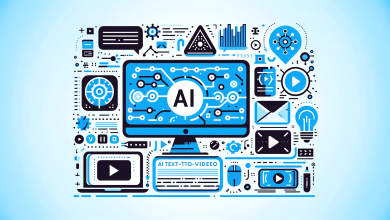Have you ever seen Google Translate discerning text snippets and converting them to English? If yes, then you are in luck; you have already experienced the benefit of text annotation, in real-time.
In simple words, text annotation is all about labelling specific documents, digital files, and even the associated content. Once these resources are tagged or labelled, they become understandable and can be deployed by the machine learning algorithms to train the models to perfection.
Text annotation, therefore, trains NLP or Natural Language Processing models, by making large volumes of data or rather textual datasets, usable enough and understandable to the algorithms.
Still confused! Read along.
What is Text Annotation?
Human language isn’t all that simple for machines to understand. It comprises semantics, i.e., phrasal and text-based elements and sentiments, with a focus on positive, negative, and neutral tones. But machines cannot hear and read to learn. At least not in the formative stage when the predictive model hasn’t been developed in the first place.
This is where text annotation comes into play, which ensures that NLP models get relevant training data to learn from. Text annotation should never be confused with text data collection as the latter is simply a process to collect and declutter datasets, while an annotation is a more deep-seated and resource-intensive process that concerns labelling.
Why is Text Annotation Important?
Chatbots, voice assistants, and machine translators are steadily coming of age. But with such an insane level of competition around, enterprises developing these autonomous resources must deploy state-of-art concepts or rather a text datasets to make them accurate, responsive, and proactive.
Anyways, it isn’t just about the datasets anymore. Text datasets, even if made available in large volumes, aren’t expected to do any good to these models as they won’t understand the meaning, context, and nuances in the first place. Text annotation, therefore, shows up as a path-breaking technology in this regard, where annotators accurately tag files and content with metadata.
The highest quality of text annotation lets the machine catch the finer nuances of the language and respond better to user queries. Also, text annotation is use-case-specific and lets developers prepare project-centric models, with relevant info.
Types of Text Annotation
Human language is laden with intricacies, and it is obvious that one form of annotation won’t be sufficient to cover it. Therefore, it is necessary to enlist the most impactful text annotation variants to give you insights into the entire process in general:
1. Entity Annotation
Best used for generating training datasets for chatbots, entity annotation aims at extracting, locating, and tagging specific entities in text. This technique can be further sequenced as NER or Name Entity Recognition, POS tagging, and Key phrase tagging.
2. Text Classification
Also termed as text categorization, this type of annotation is all about annotators making effort to analyze the content, discern the overall subject, and even focus on the sentiment and even intent of the same. Unlike entity annotation that focuses on words, text classification takes the entire body into account and classifies it using a single label.
3. Entity Linking
Finding entities in text and annotating them is useful enough but so is linking those entities together to create a larger and more connected repository. Entity linking is further segregated into entity disambiguation, i.e., linking names and similar entities with existing databases, and end-to-end linking, which is entity analysis and disambiguation, rolled into one.
4. Sentiment Annotation
This type of annotation is all about adding emotional intelligence to the datasets to letting models understand the context better. This form of annotation lets the model understand the meaning of the text comprehensively, by taking the emotions into account. Sentiment annotation can be further classified as opinion mining and sentiment analysis.
5. Linguistic Annotation
Better termed as corpus annotation, this approach concerns tagging textual data or even audio recordings with relevant metadata. Annotators tasked with linguist annotation are in charge of flagging and identifying errors, phonetic elements, and semantics in both audio and textual data to make the NLP models more comprehensive.
For the sake of simplicity, you can even look at intent and relationship annotation techniques, depending on which versions annotators use to segment their services.
How to Annotate Text Datasets?
Still unsure as to how these text annotation techniques are applied to train NLP models. Fret not, as the process isn’t as complicated as certain factions make it to be. Firstly, skilled and experienced human annotators are assigned to the job of analyzing and labelling data as per sentiments, which requires a more nuanced view of things.
Text Annotation Examples: Right from the Vault
Let us take the following text snippet into consideration and start annotating it right away. This is a standard ‘Text Classification’ approach where individual elements of the text are identified as separate entities like Organization, Date, Person, and Location.

Another example is to annotate the text for sentiments, which involves experienced human annotators. Now, take a look at this restaurant review. In case the restaurant wants to develop an intelligent app to address user concerns, it should be able to understand the nature of the reviews, automatically. Just like it has been annotated here.

Wrap-Up
Well, this is how text annotation pans out in real-time. However, organizations looking to develop intelligent NLP models with NLU and NLG integrated within, must look to outsource text annotation workload to experienced service providers like Shaip where specialists and a skilled team of annotators can help you prepare project-specific training data, in no time.




